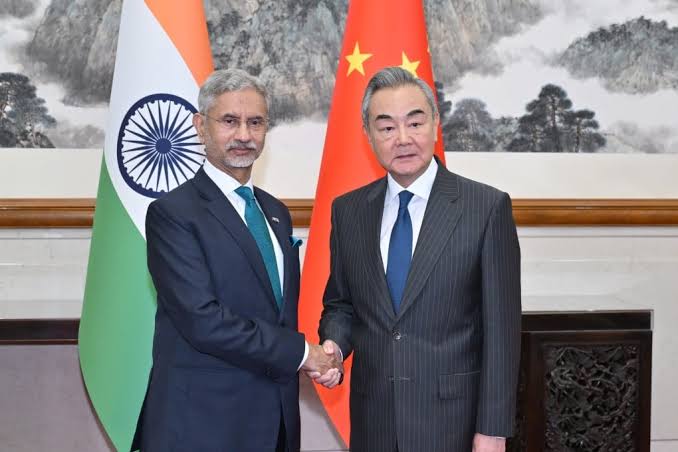In a significant breakthrough for India-China relations, the Ministry of External Affairs (MEA) of India and the Ministry of Foreign Affairs of China announced several important agreements during the recent high-level meetings held in New Delhi on August 18-19, 2025. The discussions, attended by Indian External Affairs Minister Dr. S. Jaishankar and Chinese Foreign Minister Wang Yi, alongside India's National Security Adviser Ajit Doval, marked a positive shift aimed at revitalizing the bilateral relationship, easing longstanding tensions, and bolstering diplomatic, economic, and people-to-people connectivities.
Key Highlights of the Announcement
-
Both countries agreed to resume direct flight connectivity between the Chinese mainland and India at the earliest, with plans to finalize an updated Air Services Agreement, facilitating smoother travel for tourists, business professionals, media personnel, and other visitors in both directions.
-
The reopening of border trade has been agreed upon through three designated trading points along the India-China border: Lipulekh Pass in Uttarakhand, Shipki La in Himachal Pradesh, and Nathu La in Sikkim, after more than five years of suspension.
-
Visa facilitation measures will be implemented to encourage tourism, business exchanges, media access, and other forms of visits, strengthening bilateral people-to-people ties.
-
Both sides committed to facilitating trade and investment flows through concrete measures designed to enhance economic cooperation.
-
In a humanitarian gesture, China agreed to share hydrological information during emergency situations, underscoring trust and cooperation on issues impacting shared water resources.
-
The Chinese side expressed support for India’s hosting of the 2026 BRICS Summit, while India will reciprocate by supporting China’s hosting of the 2027 BRICS Summit, reflecting deeper strategic coordination within multilateral frameworks.
Details on the Agreements and Their Implications
Resumption of Direct Flights and Visa Facilitation
The restoration of direct flights is a major step toward reconnecting two of Asia’s largest economies, promoting tourism, business travel, and cultural exchanges. This move signals a thaw in relations after disruptions caused by the COVID-19 pandemic and geopolitical tensions in previous years. Streamlining visa processes for multiple categories of visitors represents a deliberate effort by both governments to facilitate easier movement and foster greater bilateral engagement.
Reopening Border Trade Through Designated Points
Trade between border communities had been halted for over five years, affecting local economies and livelihoods. The agreement to reopen trading through Lipulekh Pass, Shipki La, and Nathu La will revive a historic channel for the exchange of goods like spices, carpets, medicinal plants, and wool, providing socioeconomic benefits to frontier populations. This move also symbolizes a mutual commitment to peace and prosperity in border regions.
Facilitation of Trade and Investment
Concrete steps to enhance trade and investment cooperation were agreed upon to overcome disruptions in commercial flows. Both sides emphasized the importance of stable economic ties as a foundation for broader bilateral relations, including exploring measures to address specific Indian demands such as resource access.
Hydrological Information Sharing
The commitment from the Chinese side to share hydrological information during emergencies, particularly related to the Brahmaputra River (Yarlung Tsangpo), reflects a humanitarian approach to managing shared natural resources. Given past Indian concerns over infrastructure projects upstream, this agreement aims to improve transparency and trust in water management between neighbors.
BRICS Summit Support
In the multilateral domain, China pledged to support India’s hosting of the 2026 BRICS Summit, while India will back China for the 2027 Summit. This reciprocal support underscores a strengthening strategic partnership within the BRICS grouping and enhances collaboration on global governance issues.
Context and Outlook
The discussions also covered issues like de-escalation of border tensions, counterterrorism cooperation under the Shanghai Cooperation Organization (SCO), and people-to-people exchanges. Both nations reiterated commitment to develop stable, cooperative, and forward-looking bilateral ties, acknowledging the critical role of leadership in shaping a peaceful neighborhood. The positive momentum follows a period of strain caused by border conflicts in 2020 and represents a concerted effort to rebuild trust and deepen cooperation.
These agreements mark a notable milestone, heralding a new chapter in India-China relations where dialogue, trade, and connectivity are being restored with a focus on mutual benefit and regional stability.
Source: Ministry of External Affairs, Government of India (August 19, 2025) and Ministry of Foreign Affairs, People's Republic of China, Reuters

